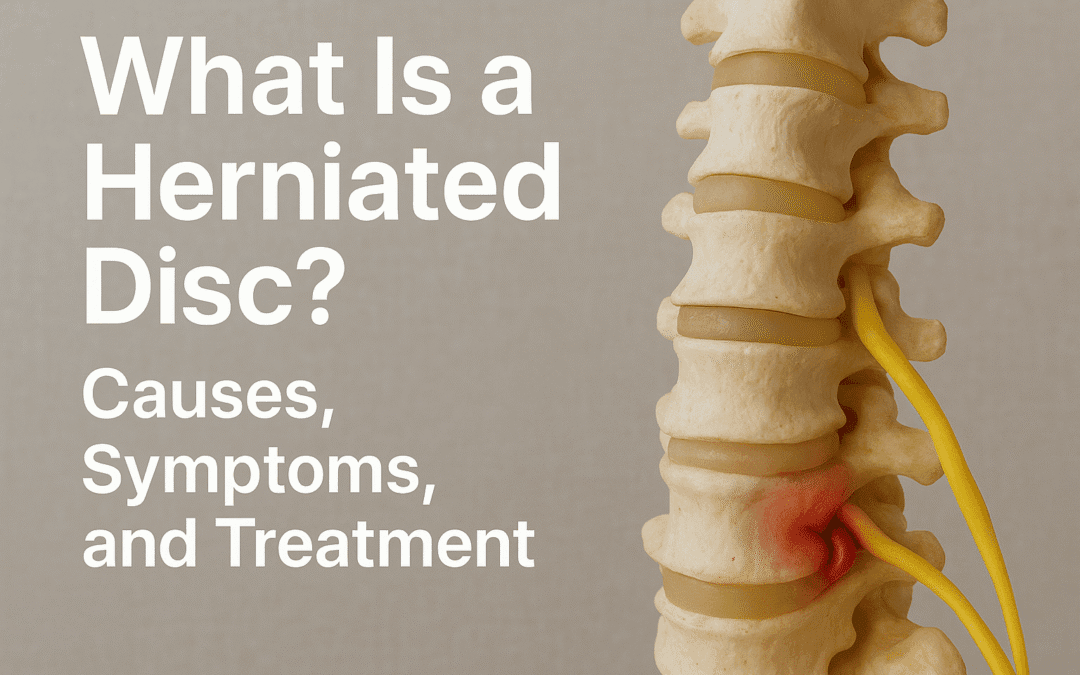A herniated disc, also known as a slipped or ruptured disc, occurs when the soft inner gel-like material of an intervertebral disc pushes through a tear in the tougher outer layer. This condition can compress nearby nerves, causing pain, numbness, or weakness in the affected areas. Herniated discs most commonly occur in the lumbar spine but can also affect the cervical region. Understanding the causes, symptoms, and treatment options is essential for effective management and recovery.
Causes of Herniated Disc
Several factors contribute to the development of a herniated disc, including:
Age-related wear and tear: Discs lose water content over time, making them less flexible and prone to rupture.
Heavy lifting or sudden strain: Improper lifting techniques can put excessive pressure on the spine.
Trauma or injury: Accidents or falls can damage the disc structure.
Genetics: Family history may increase susceptibility to disc problems.
Poor posture: Prolonged sitting, slouching, or improper ergonomics can accelerate disc degeneration.
Obesity: Extra body weight puts additional stress on the spine.
Symptoms of Herniated Disc
The symptoms vary depending on the location of the herniated disc but generally include:
Back or neck pain: Persistent or sharp pain in the affected region.
Radiating pain: Pain can travel to the arms, legs, or buttocks.
Numbness or tingling: Loss of sensation in the extremities.
Muscle weakness: Difficulty lifting objects or performing routine tasks.
Limited mobility: Stiffness and reduced range of motion in the spine.
It is important to note that some herniated discs may be asymptomatic and detected only during imaging tests like MRI or CT scans.
Diagnosis and Medical Evaluation
Doctors typically use a combination of physical examination and imaging techniques to diagnose a herniated disc. These may include:
X-rays: To rule out other causes of pain.
MRI: The most detailed method to visualize soft tissue and disc herniation.
CT scans: Useful in complex cases to identify nerve compression.
Neurological tests: Evaluate reflexes, muscle strength, and sensation.
Early diagnosis ensures timely intervention and prevents long-term complications.
Treatment Options
Treatment for a herniated disc depends on the severity of symptoms:
Conservative Treatments
Rest and activity modification: Avoid heavy lifting and repetitive bending.
Physical therapy: Exercises to strengthen core muscles and improve flexibility.
Medications: Anti-inflammatory drugs, pain relievers, or muscle relaxants.
Heat or ice therapy: Reduces inflammation and alleviates pain.
Interventional Procedures
Epidural steroid injections: Reduce inflammation and relieve nerve pain.
Minimally invasive surgery: Procedures like microdiscectomy remove disc fragments pressing on nerves.
Lifestyle Changes
Weight management: Reduces strain on the spine.
Ergonomic adjustments: Proper posture and supportive furniture.
Regular exercise: Low-impact activities like swimming or walking to strengthen the back.
Prevention Tips
Preventing a herniated disc involves maintaining spinal health:
Lift objects correctly, using legs instead of back.
Avoid prolonged sitting; take frequent breaks.
Strengthen core and back muscles with regular exercise.
Maintain a healthy weight and balanced diet.
Practice good posture during daily activities.
Conclusion
A herniated disc can significantly impact quality of life, but early diagnosis and proper care can lead to effective recovery. Maintaining spinal health and following preventive measures is essential.
With appropriate treatment and lifestyle modifications, individuals can reduce pain, regain mobility, and prevent recurrence. Understanding the causes, symptoms, and treatment options empowers patients to take control of their spinal health.


Recent Comments